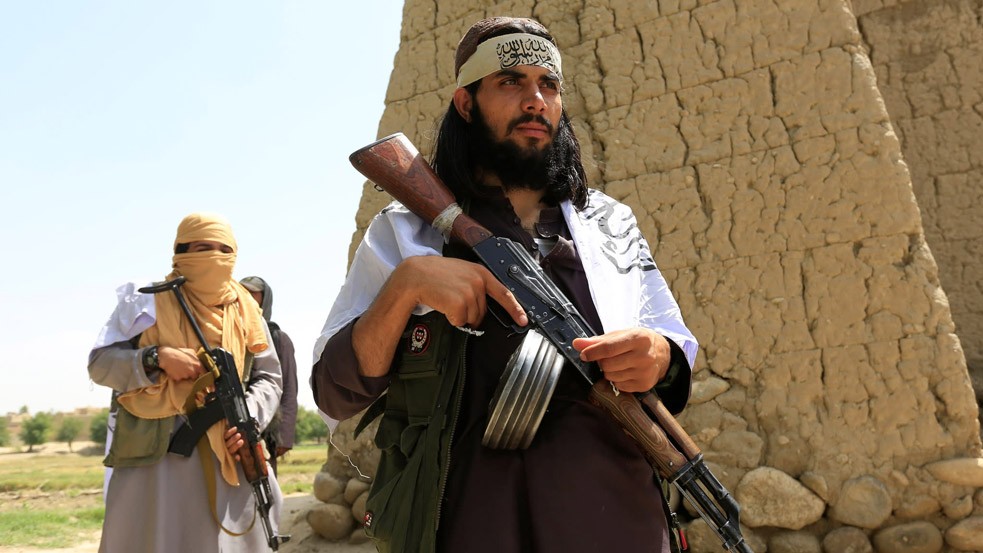
Afghanistan seems heading towards a bloodier and messier future until one of the two contending parties, US or Taliban, win

In the first week of December, US President Trump wrote a letter to Prime Minister Imran Khan in which he sought Pakistan’s help to bring Taliban to peace negotiation. The New York Times, on the authority of an unidentified American official, carried that the letter also made it clear that Pakistani help was "fundamental" to rectifying bilateral relations.
In November, Trump, in an interview with Fox News Sunday, defended his decision to stop releasing hundreds of millions of dollars in security aid to Pakistan citing the country’s complicity in sheltering Taliban and Osama bin Laden until the latter was killed in an American military raid back in 2011. In the history of Pakistan-US relations, perhaps for the first time Washington suspended a $4.3 million loan way back in August 1963 against the backdrop of an air agreement between Islamabad and Beijing.
Lt Gen Kenneth McKenzie, the next chief of the US Central Command (Centcom), was skeptical of Pakistan hitherto role in the Afghan reconciliation process while responding to the US Senate Armed Services Committee. On December 7, the Centcom chief said: "Pakistan does not appear to be using the full extent of its influence to encourage the Taliban to come to the table". What is consistent in the US official position on the Afghan quagmire has been to point the finger at Pakistan. "We continue to see the Taliban being utilised as a hedge against India rather than as part of a stable, reconciled Afghanistan," he maintained.
Pakistan’s importance in the peace process emanates from its alleged influence with Taliban and that the US is mainly reliant on Pakistan for logistics of war in Afghanistan. American military flights, fuel and food supplies go through either Pakistani airspace or its roads and rails. For the US, there is no equivalent alternative to reroute these supplies as the Northern Distribution Network, passing through Central Asia, largely depends upon the Russian consent. Moscow’s willingness to cooperate is something that can’t be assured of. This catches Washington between the devil and the deep blue sea.
Pakistan blocked NATO supply trucks, 5,000 of which passed through it a month, in the wake of a US aerial bombardment that killed 24 Pakistani soldiers in November 2011. It took seven months of tough negotiation which included an apology from the then US Secretary of State Hillary Clinton that Pakistan restored NATO traffic. During these months, NATO reoriented its traffic to northern route that incurred an additional $100 million a month.
Besides, the route is precarious and passes through tough terrain, fraught with puddles, dirt gorges and mud traps. The route also includes dilapidated Soviet-built one-and-half mile long Salang tunnel cutting through Hindukush at a height of 11,200ft. The tunnel was constructed back in 1964.
The US keenness to advance Afghan peace is prompted by the ground realities in Afghanistan. The US has spent more than $840 billion in Afghanistan since 2001 while fighting Taliban, al Qaeda and others of their ilk, and paying for reconstruction and relief in the county. It could not be worse in terms of what has been lost.
Afghanistan is plunging into an abyss of Taliban control. By May 16, 2018, according to the Long War Journal, the Islamist militia either controlled or contested 61 per cent of districts in Afghanistan, a finding that contradicted US government’s report by Special Inspector General for Afghanistan Reconstruction (SIGAR) on May 15, 2018 which claimed that Taliban either controlled or contested 44 per cent of districts in the country. The American loss is Taliban’s gain in the zero sum game played in the Afghan theatre of war.
Given their victories on the ground, Taliban are now sure of overrunning the country than they ever were. They consider the Afghan government as American puppet and would only enter into negotiation with the US government which they see as the only real authority in Afghanistan to talk to.
In his meeting with Imran Khan and other Pakistani officials, US Special Representative for Afghanistan Reconciliation Zalmay Khalilzad must have struck where Pakistan has been most vulnerable since its inception. Pakistan can only enjoy American largesse if it cooperates and bring Taliban back to negotiation, the envoy might have communicated to his Pakistani interlocutors.
Which direction will Afghanistan be headed to? Apparently, Pakistan might not be having the same level of influence with Taliban which it used to have when the militia hardly controlled any area in Afghanistan. Even if it enjoyed any influence why would Islamabad ask Taliban, seen as Pakistan proxies, to settle for less than the complete occupation of Afghanistan, a prospect which Taliban are nearly certain of.
Besides, the militia has long stipulated the complete pullout of NATO forces as a prerequisite to ending the war. The United States is not in a mood of humiliating withdrawal either. As indicators point to, Afghanistan is heading towards a bloodier and messier future until one of the two contending parties, US or Taliban, win. As of now, history is on the side of Taliban!